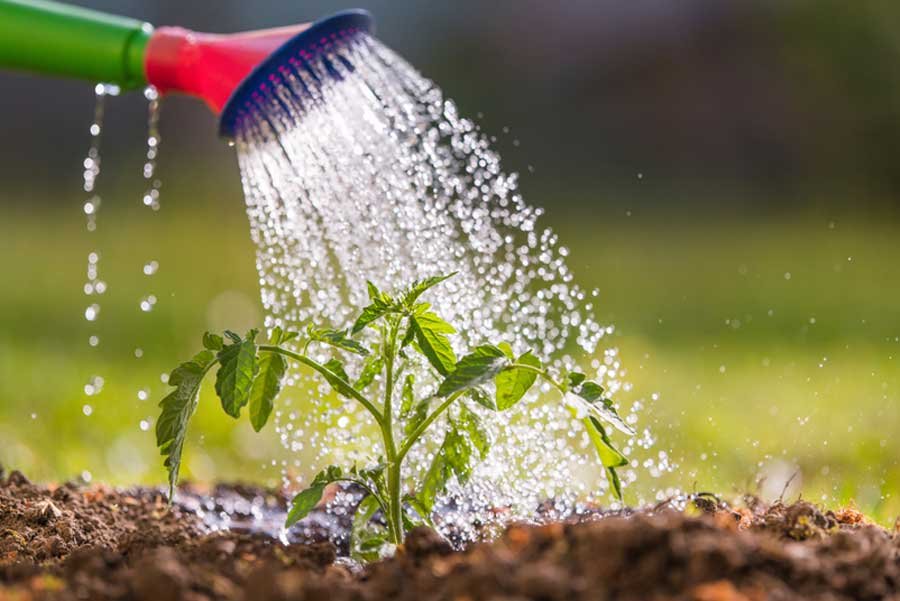Growing a home garden can be a healthy, fun, and economical hobby. In 2019, 31.9 million American households grew gardens to beautify their lawns and supplement their diets with fresh, homegrown veggies and herbs.
You don’t need a green thumb or any special training to grow a healthy, productive garden. By focusing on climate and plant choice and using quality tools to cultivate your garden, you can produce an abundant selection of vegetables and herbs in no time. Explore these eight tips for growing a healthy garden at home and reaping a bountiful harvest from your own backyard.
1. Consider Your Climate
Before you plant your garden, you need to explore whether your ideal garden plants are suitable for your climate. The most successful gardens contain plants native to the area or native to a similar environment. One new approach to gardening is called Xeriscaping.
This practice reduces the need for additional water and fertilizer by only using local plants. Xeriscaping is an excellent gardening approach for novice gardeners because it requires less maintenance and upkeep than tending to non-native plants with varied growing requirements.
Alternatively, use the U.S. Department of Agriculture’s hardiness zone map to identify your climate. Understanding your hardiness zone helps you determine which plants can thrive and survive in your climate so you can pick flowers, fruits, herbs, and vegetables to grow successfully in your garden.
2. Choose the Right Plants
When choosing plants for your garden, think about your goal for the garden. If you want to eat your harvest, plant the type of veggies you like, provided they will grow in your area. For example, squash, pumpkin, and potatoes grow well in cooler regions. Try fruiting trees like oranges, lemons, and peaches in warmer regions.
Consider flowers and ornamental shrubs local to your area if you prefer a decorative garden. Obtain a native plant book for your state for inspiration, or visit a site like Native Plant Finder to view the plan database for your region. Avoid plants considered invasive or harmful to your local ecosystem and wildlife.
3. Find the Perfect Spot
You need to scope out the best area in your yard for your garden. Read the growing instructions for each type of plant you plan to grow and base your garden location on the amount of sun they need. An excellent general rule is to place your garden in an area that gets around three to six hours of sunshine per day.
You can also plan your garden according to your available sunlight. If you live in a shady area with minimal sunlight, choose plants that can grow well in the shade, like primrose, arugula, and cauliflower. If you live in an extremely sunny area, opt for peas, tomatoes, or cucumbers because they grow well in full sun.
4. Improve Your Soil
Depending on the soil composition, you may need to buy new soil or improve what you have in your yard to enable your plants to grow. Most plants thrive in loose soil that contains a mixture of dirt and organic material. Loose soil promotes healthy root growth, and the organic material promotes beneficial microbe life for your plants. Buy or cultivate a soil mixture with equal parts sand, clay, and silt and consider starting a compost pile to add to your garden for extra nutrients.
Using high-quality lawn and garden tools is essential when preparing and tending your soil. Using low-quality tools may cause broken roots and irregular growth in your garden due to poor functionality. Proper tools help keep the soil loose and healthy because they allow you to remove unwanted weeds efficiently to free up soil nutrients for your garden.
5. Explore Fertilizer Options
It is often tempting to equate more fertilizer with a more productive garden. However, this is often not the case. Using too much fertilizer can harm the plants and seriously degrade your soil quality. Fertilizer runoff during rail storms can be harmful to the ecosystem. Improving plant health through pruning and weeding is better than using more fertilizer.

6. Provide the Right Amount of Water
Correctly watering your plants can feel overwhelming for new gardeners. It often feels like an art rather than a science; too little water causes the plants to wilt, but too much water promotes weed and pathogen growth. Most vegetable plants require about one inch of water per week, ideally in the morning or evening.
If you put in plants native to your climate, rain might take care of all the water they need. However, pay attention to climate shifts and long stretches of drought and water when necessary. If your garden contains non-native plants, use a drip irrigation system to give them the water they need without losing too much to evaporation.
7. Take Pest Control Measures
Pests can quickly destroy a kitchen or decorative garden. To keep your garden healthy, you’ll need to develop a strategy for dealing with pests. Spraying your garden with potent pesticides can harm the ecosystem and your family if used excessively, so look for alternative options. For invisible pests, proper weeding and watering can keep them at bay. For larger pests, opt for natural pesticides that don’t contain toxins.
Raised concrete plant beds provide an excellent solution to pest issues. Raised beds should be at least 10 inches off the ground. You can make raised beds from wood; however, avoid using treated lumber, which can contain harmful chemicals. Instead, make raised beds out of concrete using heavy-duty concrete tools to help you prevent pest infestation problems.
8. Maintain Your Garden
After your plants begin to grow, you must maintain your garden for healthy plant life. Weeds can strangle your plants’ roots and compete for resources, so regular weed removal is necessary.
Prune unruly leaves, stems, or vines to ensure your plants don’t invade other areas of your garden. Pruning also helps your vegetable plants and herbs produce a large, healthy harvest. Perform these routine garden maintenance tasks weekly and check for weeds and plant damage after inclement weather.

Grow a Healthy Garden to Promote a Healthy Lifestyle
Growing a bountiful garden is a fulfilling and rewarding experience. To ensure the health and vitality of your plants, choose the appropriate herbs, vegetables, shrubs, and flowers for your climate and soil type. By building a raised plant bed and tending to your garden regularly, you can see abundant growth and reap a plentiful harvest. For example, you can check out this guide on how often to water roses.












